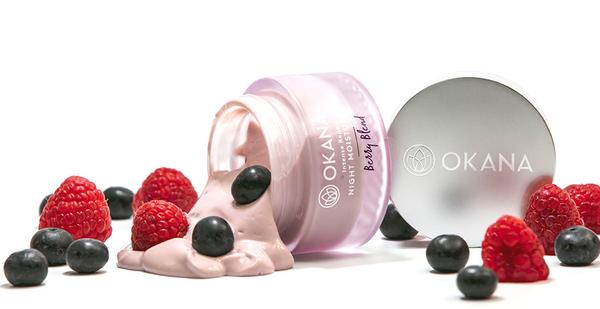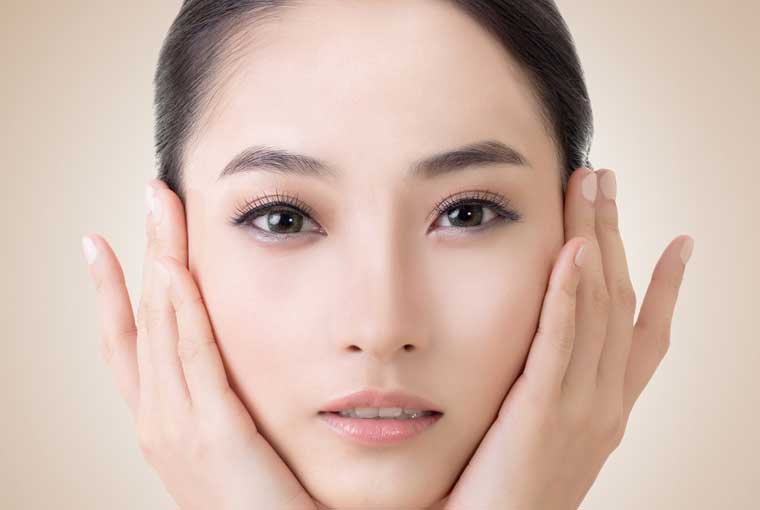
How do Skin Moisturisers Work?
Moisturisers are the holy grail of skincare; the products that no woman over the age of 20 can imagine being without. But do you know exactly what a moisturiser does?
Most think moisturisers put moisture into your skin. That’s only part of the story. The main job of a moisturiser is to prevent evaporation of water in the stratum corneum, the outermost layer of your skin. If you want to pass ‘Moisturiser 101’, keep on reading!
How a moisturiser works
The first job of a moisturiser is to make your skin more moist. Skin dries out due to a normal process known as ‘trans-epidermal water loss’ (TEWL). This happens because blood vessels only supply moisture to the middle layer of skin (dermis). From there, water moves outward to the top layer of skin (epidermis), where it comes into contact with the air and evaporates.
A moisturiser’s most important job is to minimise or stop this evaporation. It does this by trapping moisture in the epidermal layer.
When temperatures drop and heaters are turned on, indoor air gets drier. And when air is drier, your skin gives up its moisture more readily. So your skin is more likely to feel dry in winter.
A closer look at the epidermis
The epidermis has a ‘bricks and mortar’ structure. The bricks are dead skin cells called comeocytes and the mortar is made up of natural skin lipids. Comeocytes are linked by proteins to form a barrier that keeps bacteria, microbes and toxins out of your body. That’s where the term ‘skin barrier’ comes from.
When moisture levels in the air drop, protein links in the barrier can break apart and create fractures in the brick and mortar structure. This means the skin barrier is compromised and more water can escape. It becomes a vicious cycle – water escaping = more cracks = more water escaping…and so on.
The three types of skin moisturiser
Three are three main types of moisturiser. Occlusives, emollients and humectants. Skincare moisturisers are usually a combination of these.
Occlusives are old-school moisturisers that work in the simplest way. They form a barrier over the skin that water can’t penetrate, so epidermal evaporation is eliminated or reduced. The classic example of an occlusive is Vaseline petroleum jelly. It prevents 98% of trans epidermal water loss, but it’s not very nice under your makeup…
Emollients are the most popular moisturisers. Instead of coating the skin, like a barrier cream, these are designed to penetrate, making the skin feel softer and more flexible. Emollients are made from fatty acids, like glycerine and vegetable oils.
Humectants attract and retain moisture in the epidermis. They also help get the younger moist cells towards the outer layer of the skin and reduce the flakiness of dry skin. What’s more, humectants stimulate the body’s natural production of ceramides, which are waxy molecules that reduce TEWL.
How Okana moisturisers are made
To understand why Okana moisturisers are so effective, let’s take a look at some of the key moisturising ingredients in our vegetable garden day moisturiser and berry blend natural night moisturiser.
Apricot kernel oil: A natural emollient that absorbs quickly into the skin without leaving an oily residue. It resembles skin’s naturally-produced oil (sebum) and contains vitamins C and E, which help prevent fine lines and wrinkles.
Olive oil: Rich in squalene, a highly-effective emollient, natural antioxidant and anti-inflammatory. Squalene is produced by your own skin cells, but production declines with age.
Macadamia oil: Another emollient that’s loaded with nourishing fatty acids. It contains high amounts of palmitoleic acid, which gives it a cushiony feeling. Because macadamia oil is so rich, it’s ideal in a night cream.
Glycerin: This ingredient is an effective humectant that helps to draw moisture from the air into the epidermis.
Betaine: Derived from beetroot sugar, betaine is an osmolyte that helps to control water balance in your skin, strengthening your skin barrier and increasing elasticity.
How to use a moisturiser correctly
First up, only apply moisturiser to properly-cleansed skin. You definitely don’t want to seal in makeup, sunscreen, stale sebum, sweat and dust that could clog up your pores.
After cleansing, spritz your skin with a pH balanced toner (like our cucumber and lettuce mist). Before the toner is dry, apply a blueberry-sized dollop of moisturiser to your face.
You can dot moisturiser all over your face, then rub in; or rub the moisturiser onto the palms of your hands, then onto your face. Use upward strokes to massage the moisturiser into your skin. Be gentle around the eye area. By the way, you don’t need a specific eye cream when you use Okana because our moisturisers are fine enough for delicate eye-area skin.
More about the amazing benefits of apricot kernel oil




Leave a comment
This site is protected by hCaptcha and the hCaptcha Privacy Policy and Terms of Service apply.